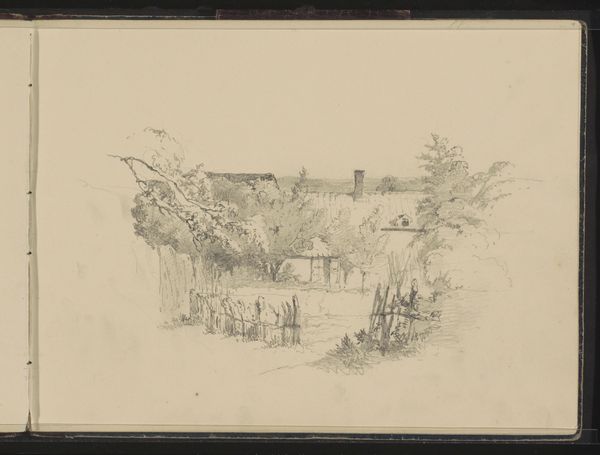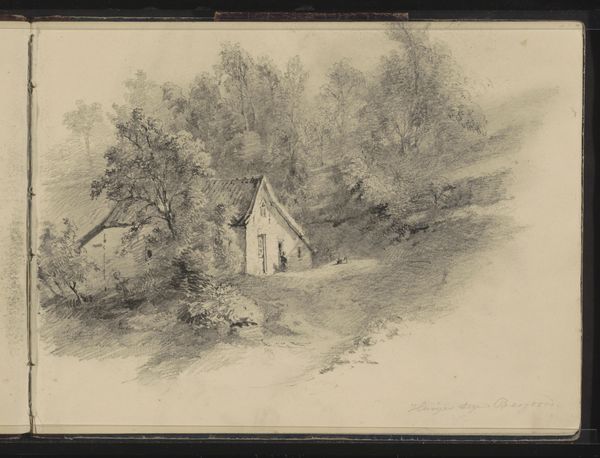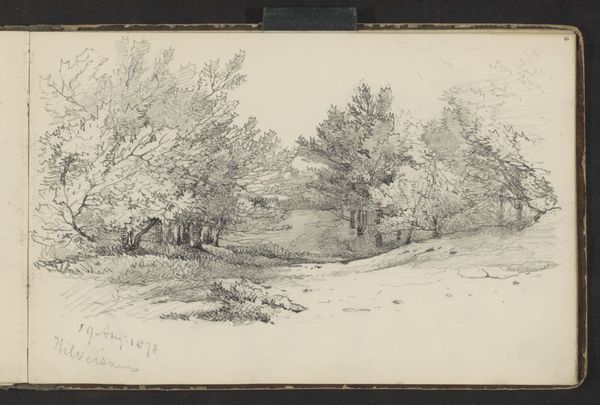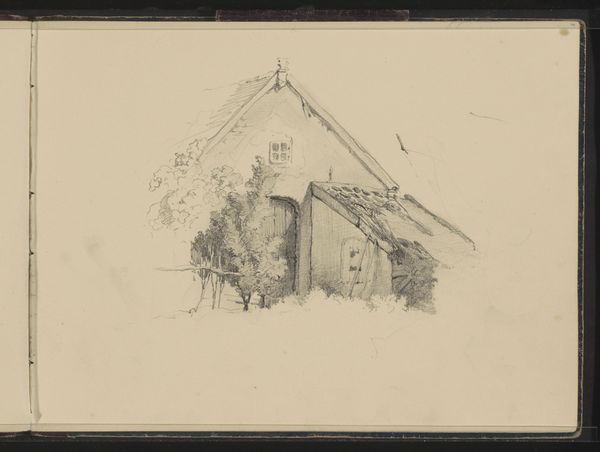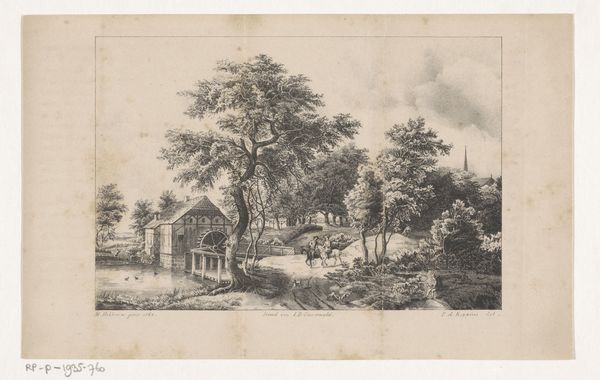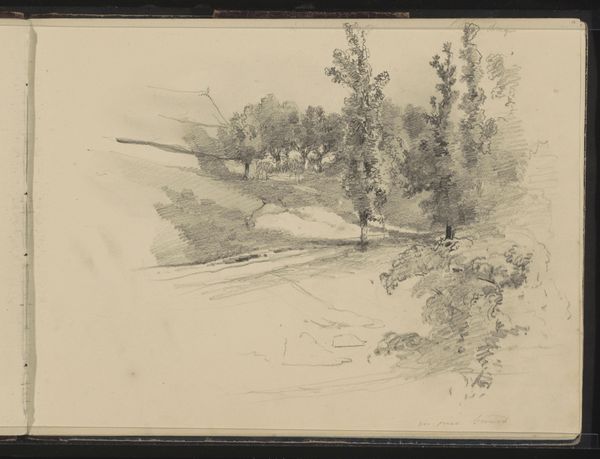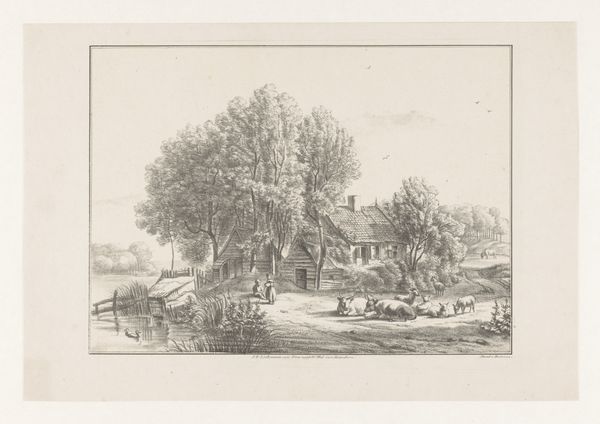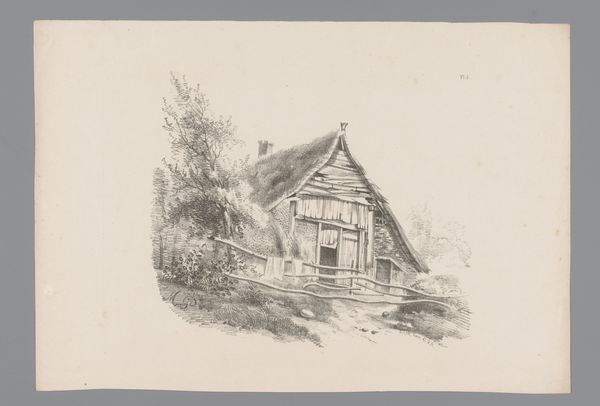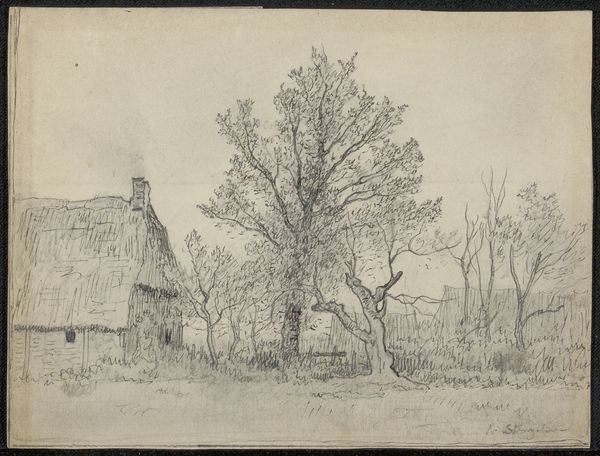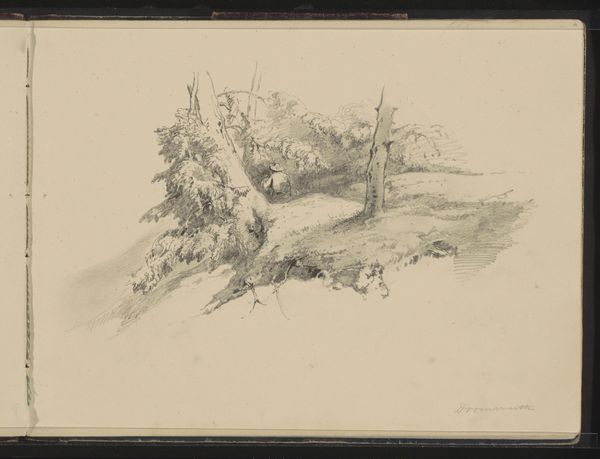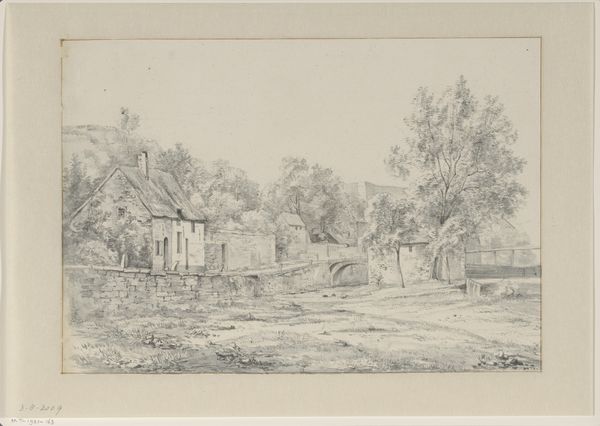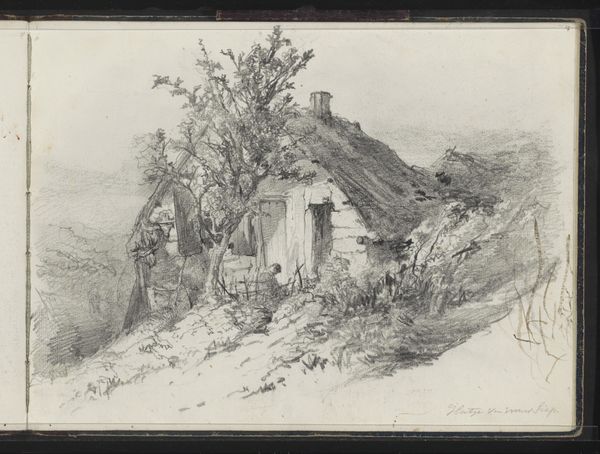
Uitzicht op een huis tussen de bomen vanuit Villa Nova te Oosterbeek c. 1864 - 1865
0:00
0:00
mariavos
Rijksmuseum
drawing, pencil
#
drawing
#
dutch-golden-age
#
pencil sketch
#
landscape
#
pencil
#
pencil art
#
realism
Copyright: Rijks Museum: Open Domain
Curator: I am immediately struck by the contrast – a very still composition of organic and man-made matter presented as something impermanent, caught as it were in medias res, not in a highly labored way. Editor: Indeed. What we see here is a pencil drawing by Maria Vos, titled "View of a House Among the Trees from Villa Nova in Oosterbeek," dating from around 1864-1865. Vos seems to have been exploring the intersection between domesticity and nature in a way very grounded to the landscape she grew up around. The paper itself, even as a reproduction, has such a wonderful texture that invites us to see these natural resources around her. Curator: The artist has paid careful attention to value – the relationship between dark and light – so the architectural structure doesn’t flatten the landscape with which it interrelates. You mention her origins, and I’m interested in thinking through that house itself. It seems in disrepair even if the architecture itself presents the signs of the production and consumption processes to offer protection from the elements. This seems so at odds with ideas of Dutch Golden Age domesticity often idealized and historicized. Editor: It is as though we, too, as viewers, have to sort through and construct, conceptually, what that is that protects us. And look at the furious lines comprising what may be hedges or simple natural outgrowths. They, for me, vibrate. What do you make of the spatial rendering that Vos employs, specifically regarding how nature envelops what we should expect to be this orderly man-made zone? Curator: I appreciate your noting how nature is doing work and, in essence, erasing some hard boundary. I’m interested in what you propose regarding the enveloping properties, although I don’t agree with erasure necessarily being her sole proposition here, as the marks of architecture offer a stark contrast to those loose forms. I would say nature and man-made matter are enmeshed, bound to interact and evolve materially through time. Perhaps that can provide more meaning in line with those historical and art historical references. Editor: Thank you for this – it allows a very welcome grounding point! Indeed, considering that temporality may prove central to future thinking of her place in history. Curator: It may prove rather formative, actually, if our interpretations do something for her critical place.
Comments
No comments
Be the first to comment and join the conversation on the ultimate creative platform.
